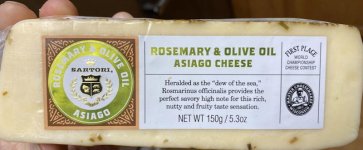"Bessed are the cheesemakers" (?)
The Biology Teacher Resurrecting Germany’s 500-Year-Old Mite Cheese
At this charming farm, quirk meets quark to make a unique cheese.

Pöschel (left) and Schmelzer, with the mite-cheese monument in Würchwitz.
The Biology Teacher Resurrecting Germany’s 500-Year-Old Mite Cheese
At this charming farm, quirk meets quark to make a unique cheese.

Pöschel (left) and Schmelzer, with the mite-cheese monument in Würchwitz.
In the mostly rural Burgenlandkreis county, just southwest of Leipzig in Germany, a tradition of making cheese using millions of live mites dates back at least 500 years. Today, there is only one commercial maker of Milbenkäse left: Würchwitzer Milbenkäse Manufaktur, a two-man operation founded in 2006 by Helmut Pöschel, a retired biology teacher, and Christian Schmelzer, a theologian.
For those unfamiliar with Milbenkäse, the “strange” aspect is the rind, which isn’t a rind at all, but 50,000 or so live mites who were instrumental in transforming a log of quark or curd into this unusual specialty. Given both its limited availability and the fact that it’s coated in tiny arachnids, the cheese isn’t widely consumed, but among chefs and laypeople who know it and love it, Milbenkäse is typically eaten cut into thin rounds and spread on top of buttered rye bread, and pairs well with wine, beer, or cocoa...
Milbenkäse is made by flavoring a soft, white, and unaged cheese called quark with caraway and salt. The cheese is shaped into balls, wheels, or cylinders. These are then dried and left in a wooden box containing rye flour and cheese mites.
And now the magic happens. For at least three months, the cheese mites excrete their digestive juices over the cheese. These juices contain enzymes that cause the cheese to ripen, turning yellow and then a darker reddish-brown. Some cheese makers let the process continue for up to one year, by which time the cheese has turned black. Good job, cheese mites.
When the cheese is ready to eat, the cheese mites don’t abandon ship. They are not removed, but are instead eaten along with the rest of the cheese...
For those unfamiliar with Milbenkäse, the “strange” aspect is the rind, which isn’t a rind at all, but 50,000 or so live mites who were instrumental in transforming a log of quark or curd into this unusual specialty. Given both its limited availability and the fact that it’s coated in tiny arachnids, the cheese isn’t widely consumed, but among chefs and laypeople who know it and love it, Milbenkäse is typically eaten cut into thin rounds and spread on top of buttered rye bread, and pairs well with wine, beer, or cocoa...
Milbenkäse is made by flavoring a soft, white, and unaged cheese called quark with caraway and salt. The cheese is shaped into balls, wheels, or cylinders. These are then dried and left in a wooden box containing rye flour and cheese mites.
And now the magic happens. For at least three months, the cheese mites excrete their digestive juices over the cheese. These juices contain enzymes that cause the cheese to ripen, turning yellow and then a darker reddish-brown. Some cheese makers let the process continue for up to one year, by which time the cheese has turned black. Good job, cheese mites.
When the cheese is ready to eat, the cheese mites don’t abandon ship. They are not removed, but are instead eaten along with the rest of the cheese...


